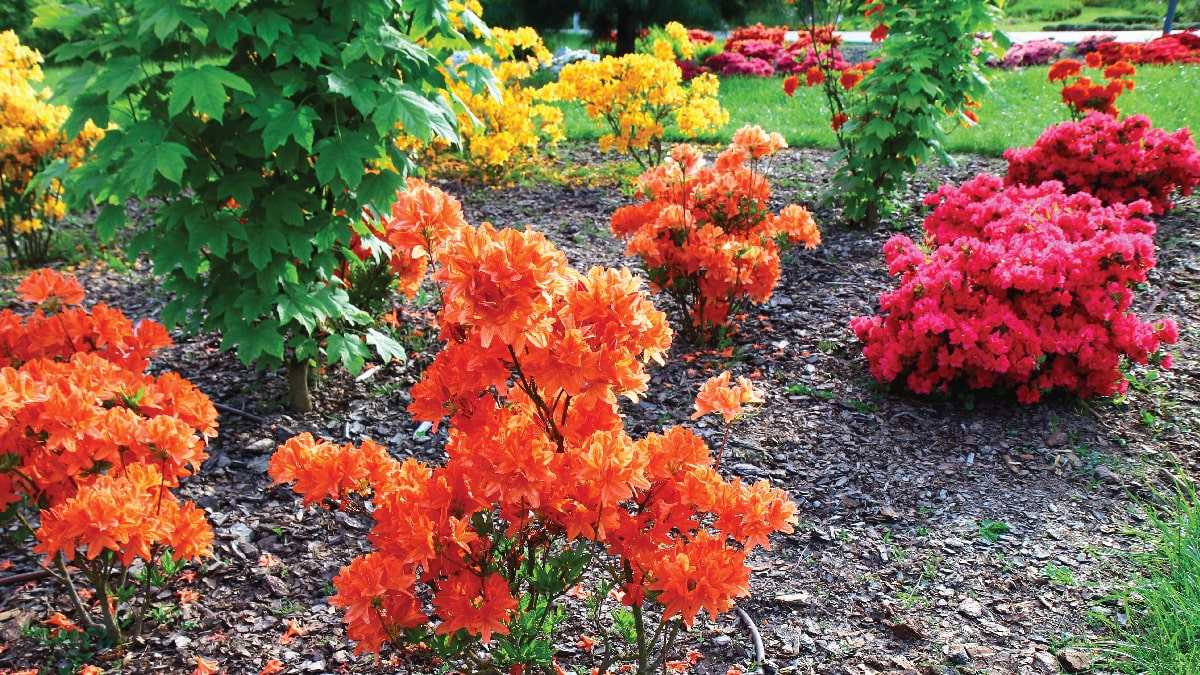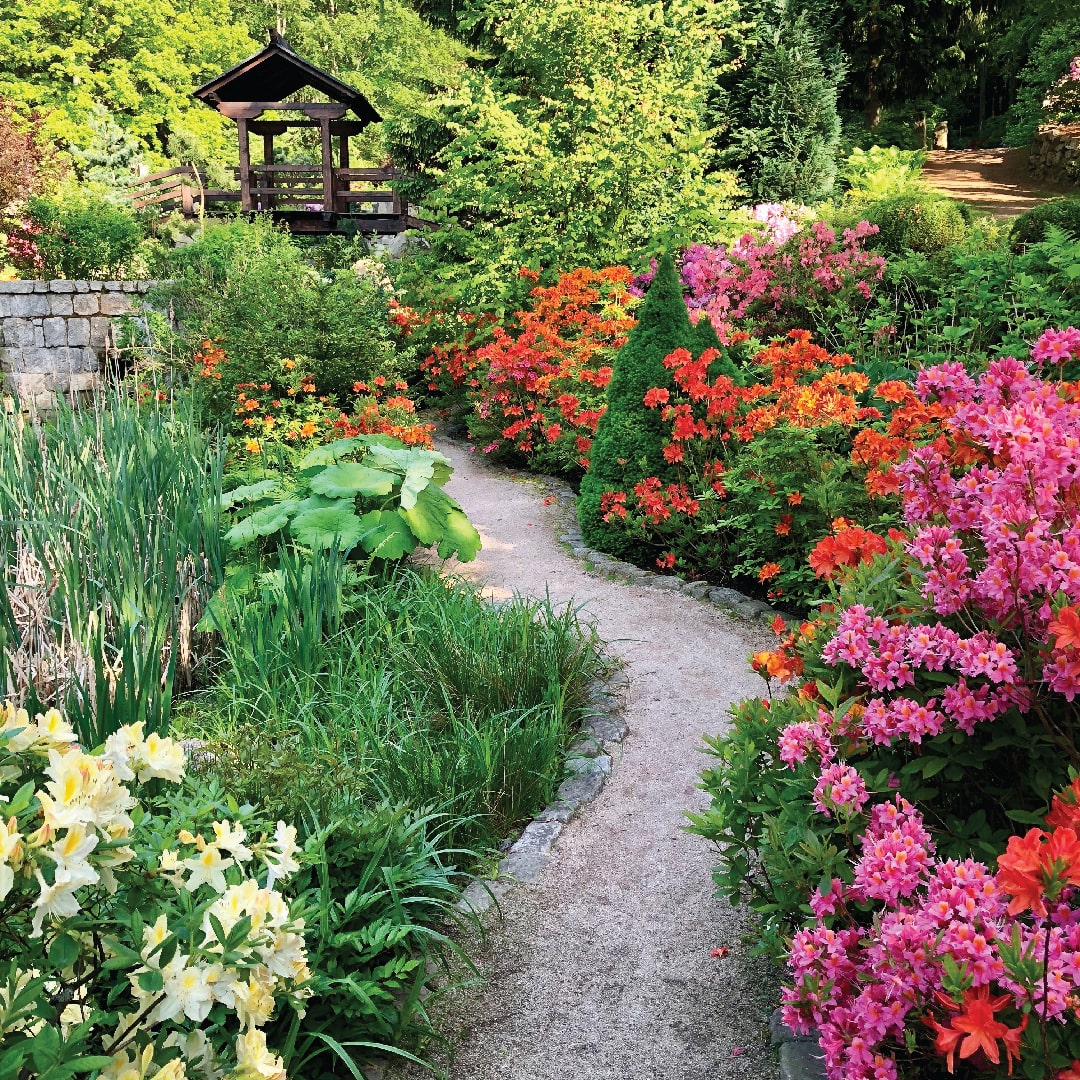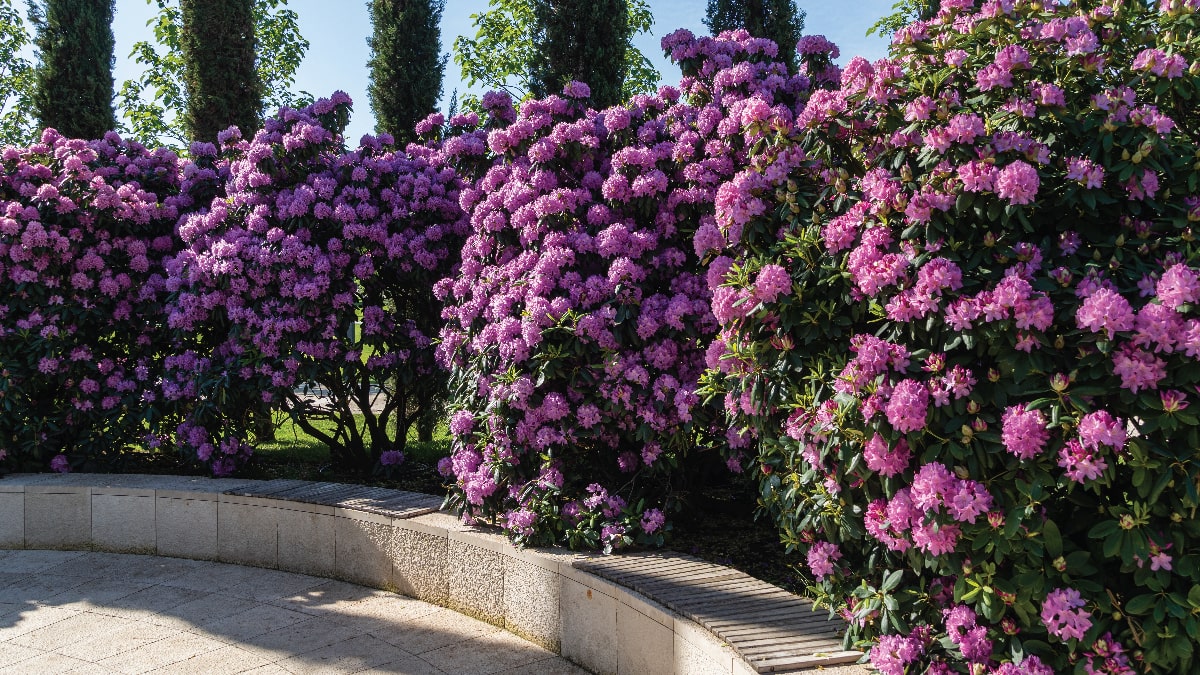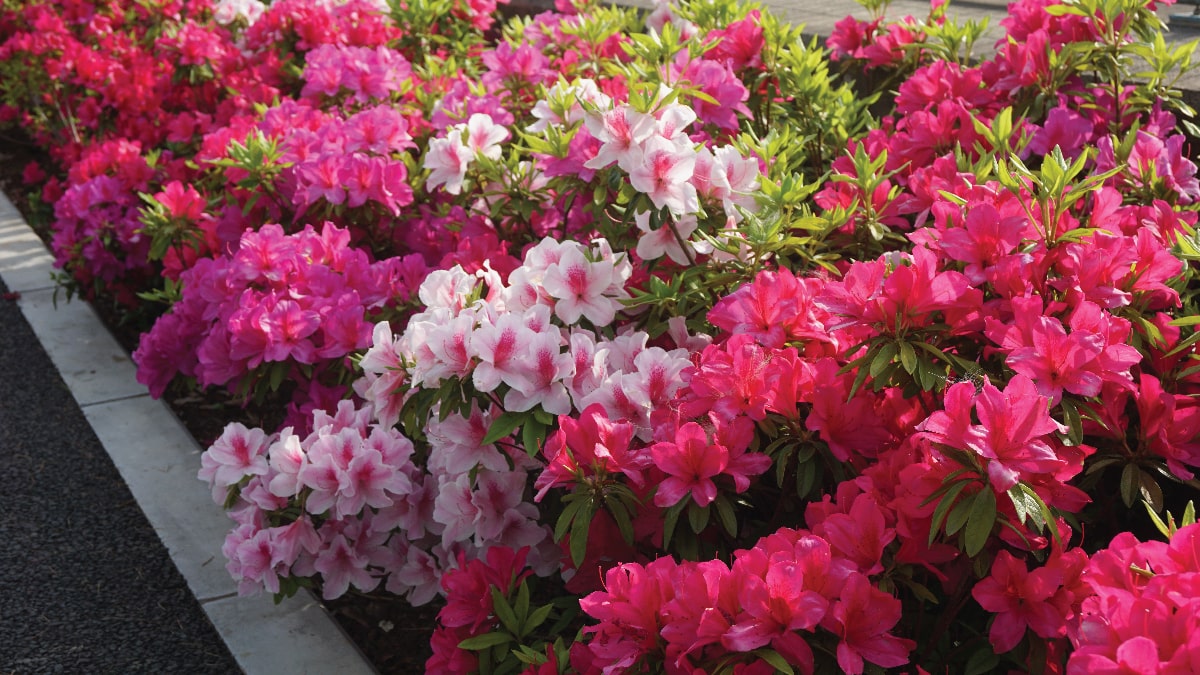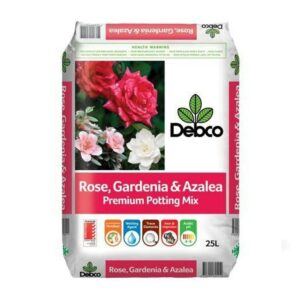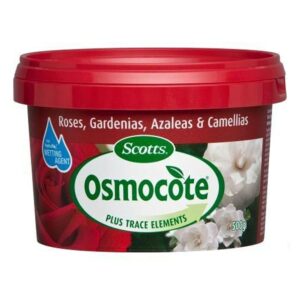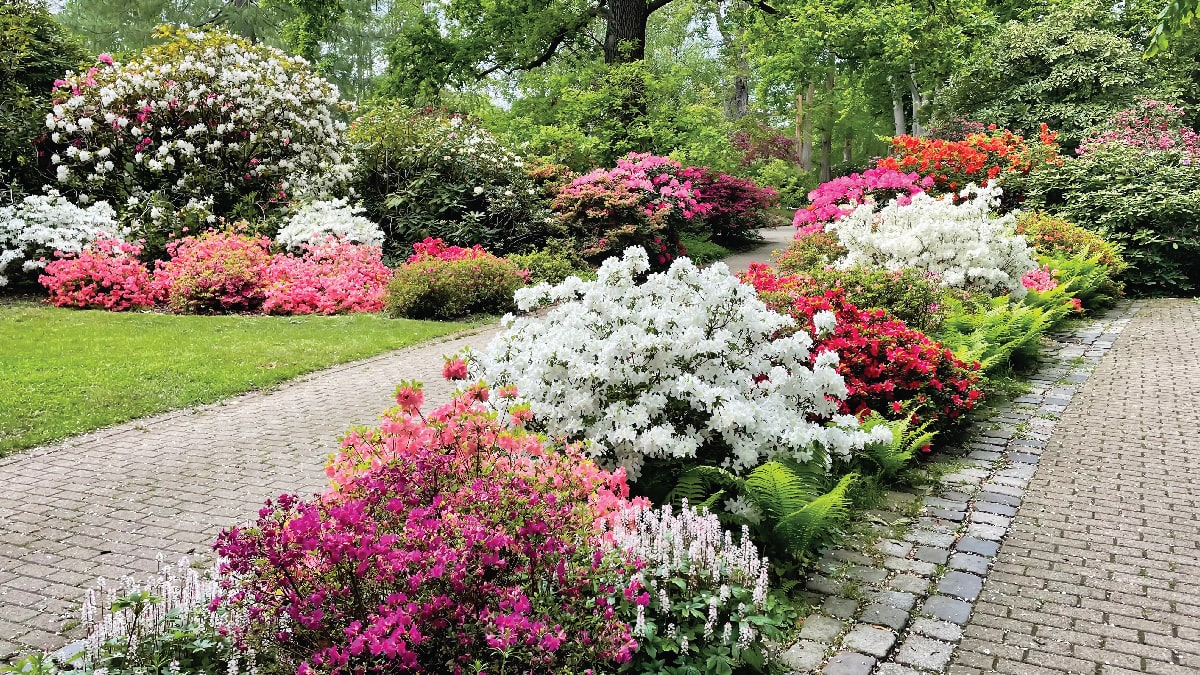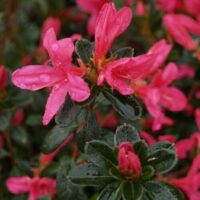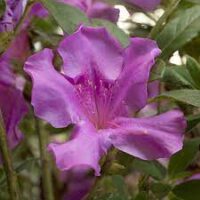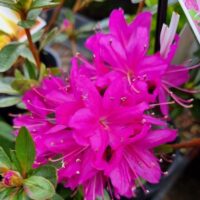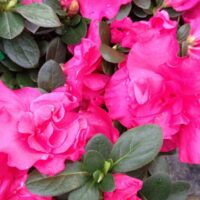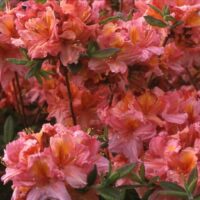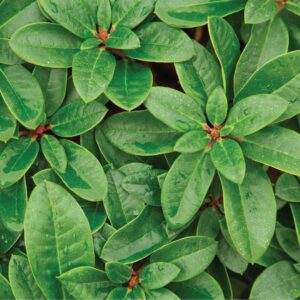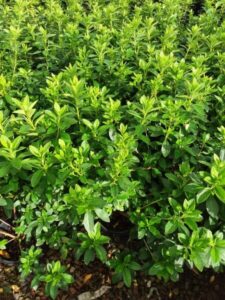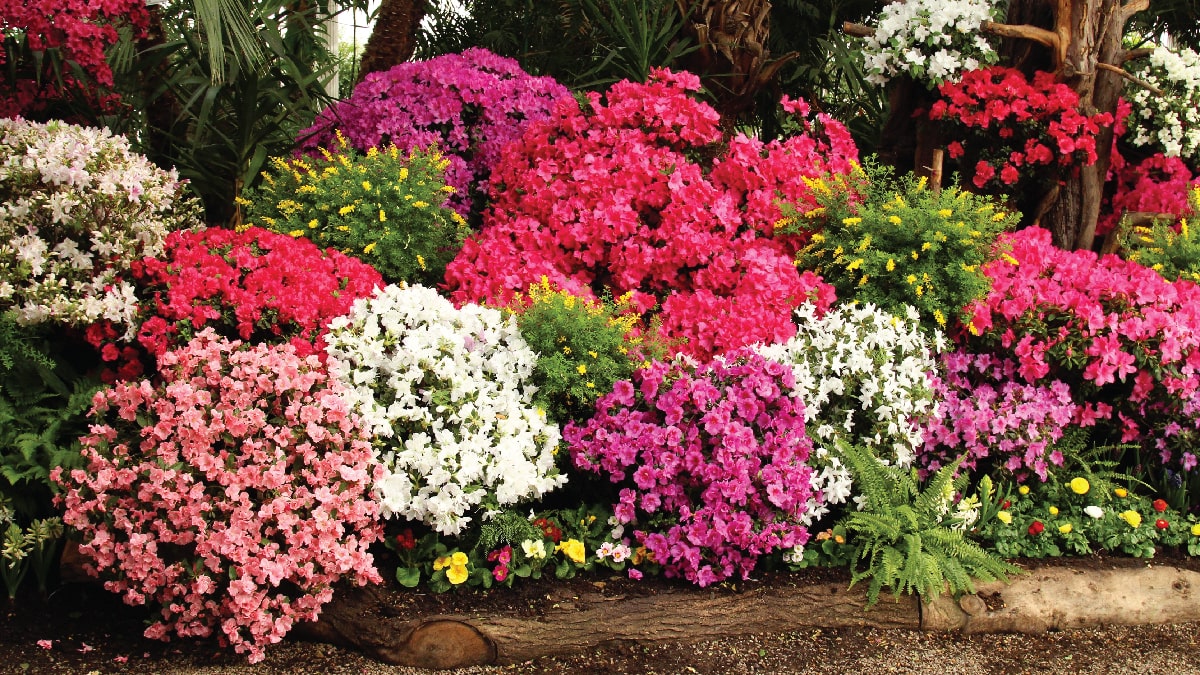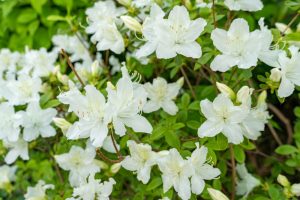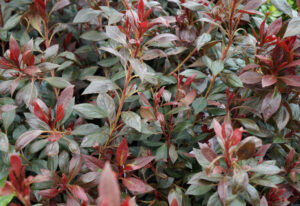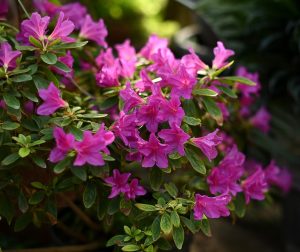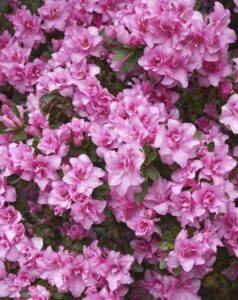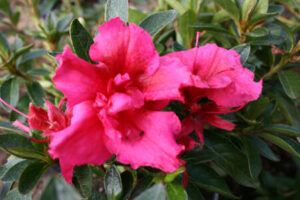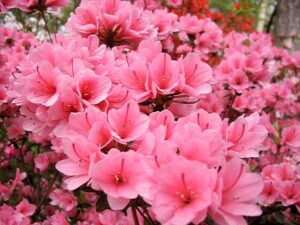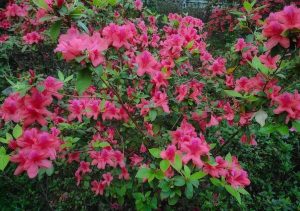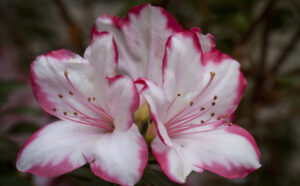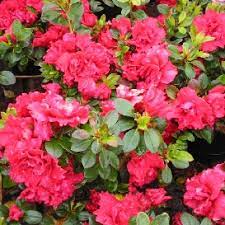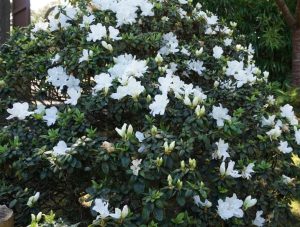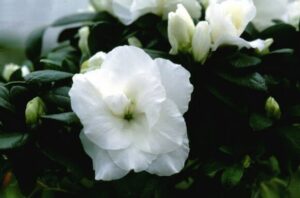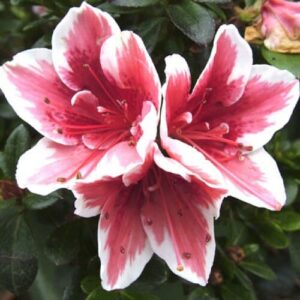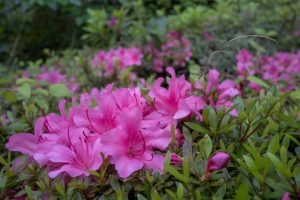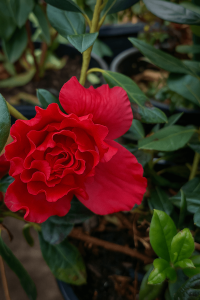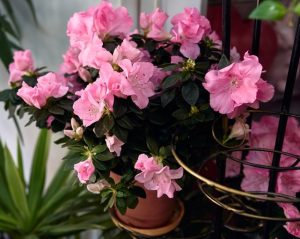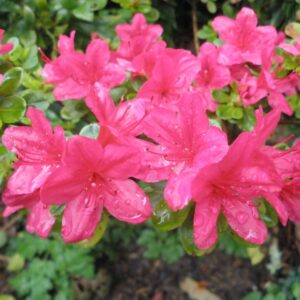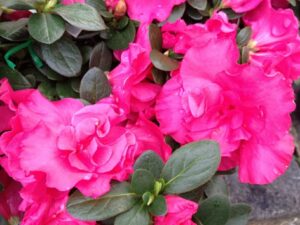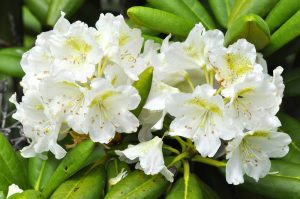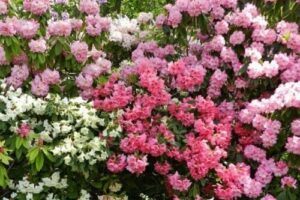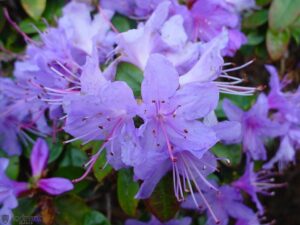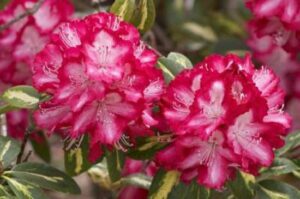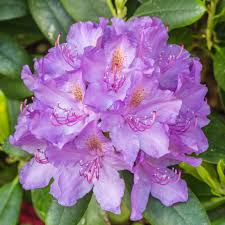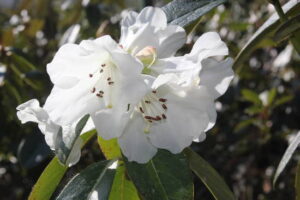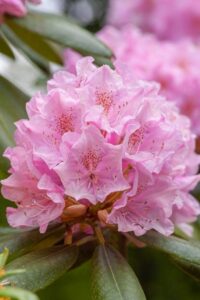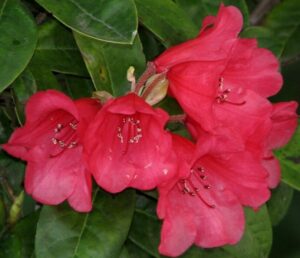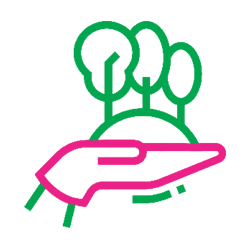Many people ask us what’s the difference between an Azalea and a Rhododendron. These two varieties have very similar flowers and leaf structures and often get mixed up. So, what is the difference?
Azalea’s are a species of Rhododendron (hence the confusion!) and they’re both in the Ericaceae family, or family of Heaths, which also include heathers, cranberries and blueberries!
Azaleas are profuse bloomers, giving a spectacular show from late winter to mid-autumn. The flowers appear in a variety of forms including single, double, fluted, frilled, speckled and softly fluffy. They are small to medium compact shrubs, either evergreen or deciduous, with spatulate-shaped leaves that range from light to dark green and bronze. They are very popular with all gardeners due to their low maintenance needs, compact nature and vibrant colour. Azaleas can be planted in a multitude of locations making them ideal landscape-design products.
Rhododendrons on the other hand are much larger in almost every way. Their leaves are long, elliptical and evergreen, often with a felt-like rust-brown surface on the underside. There are a number of different ways in which Rhododendrons can be used in the garden, with the most popular of course being as a specimen plant. Choosing a variety is as simple as deciding what colour you want, how high you want the plant to grow, and how much light is available, bearing in mind that although many varieties like dappled shade, fully shaded areas will reduce flower quantities. If the area is in full sun, make sure you select a heat tolerant species, and mulch the ground around the plant to retain moisture. By choosing a mixture of colours and flowering times, you can maintain interest in the garden over a long period of time.
Because they enjoy the same conditions as azaleas and camellias, and flower at similar times, Rhododendrons can also be used as a massed display, and in larger gardens can be interspersed among trees to create a natural ‘woodland’ setting. Smaller varieties of Rhododendron are great to plant in tubs to colour up a patio or decking area. Mixed plantings of both Azalea and Rhododendron offer a wonderful display to any garden
Plant Type: Bushes & Shrubs, Tree
Uses: Feature, Borders & Edging, Garden Filler, Shade Tree, Driveway
Garden Types: Lush & Leafy, Cottage, Woodland, Japanese, Courtyard
Care
Sun Requirements: Most Azalea varieties prefer a partial shade to full shade position. However the Encore varieties can tolerate a full sun position providing the soil requirements are met.
Water Requirements: Water well in poor soils until established. Relatively self reliant once established.
Soil Requirements: Prefers a well drained mildly acidic soil. Potted plants require regular watering.
Fertilizing: Plant in soil prepared with Osmocote Controlled Release, Gardenia and Azalea soil mix and Dynamic Lifter. No Lime as Azalea like acidic soils.
Pruning: Not necessary unless shaping is desired following flowering. Rhododendrons will require heavier pruning to maintain an appropriate size.
Tolerances: Acid soil, cool shady areas, frost, full sun (some varieties).
Diseases & Pests: Leaf miner, lace bug and white fly, greenhouse thrips, two-spotted mite. Powdery mildew, leaf gall, petal blight and grey mold
Key Features
Flower: Single or double bell or trumpet-shaped blooms. Purple, red, orange, pink, yellow, orange and white. Some flowers have striations and spots. They are usually clustered inflorescences at branch tips.
Foliage: Mid-green to dark green. Some Azalea may turn dark red or bronze. Spatulate leaves. Some semi-deciduous. Rhododendron have long, elliptical green leaves with rust-bronze felt undersides. Leaves are much larger than Azalea.
Edible: No
Toxicity: No known toxicity.
Attracts: Bees, birds, all types of pollinators.




